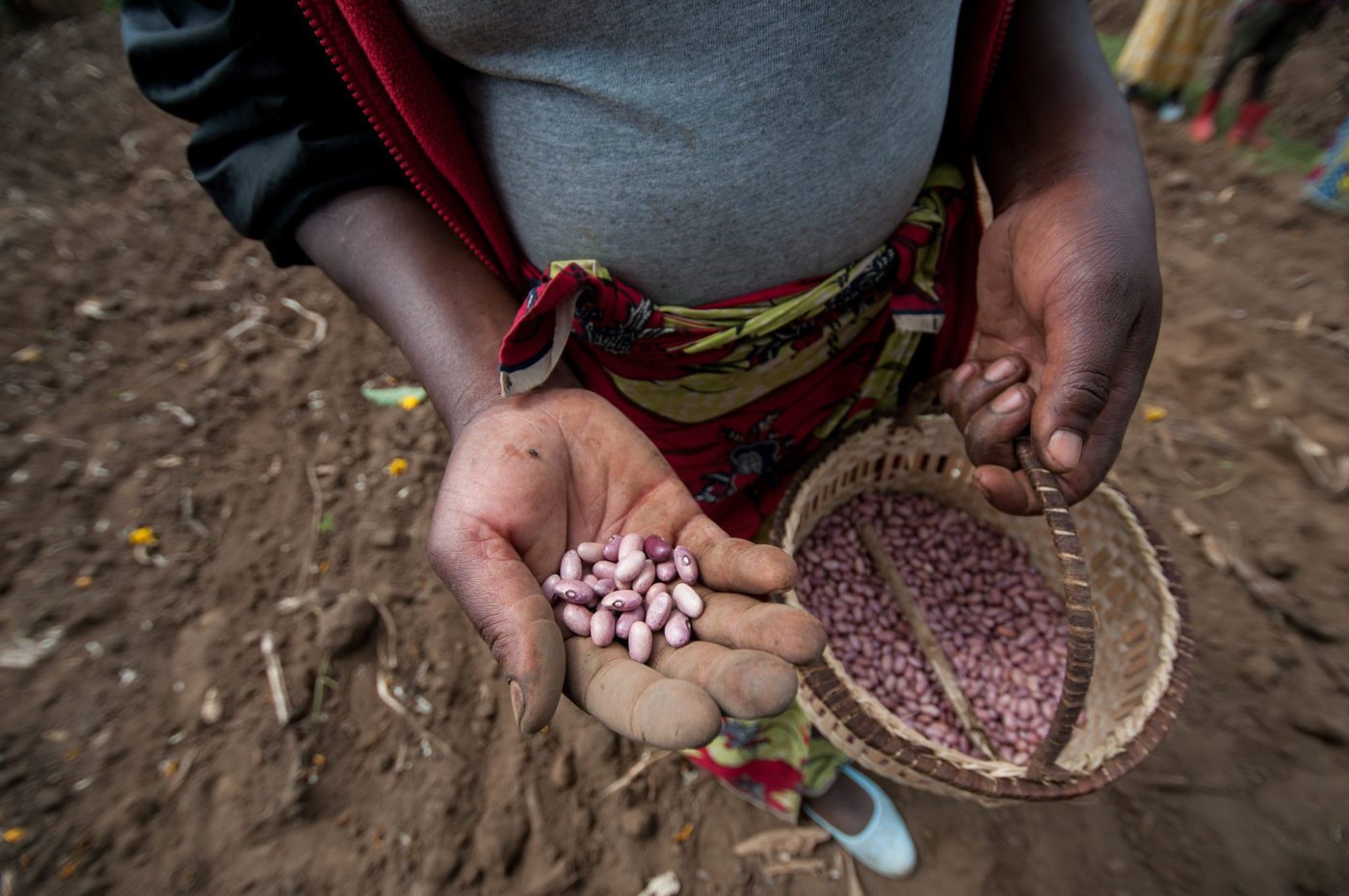Dr. Robin Buruchara, Director for Africa for the International Center for Tropical Agriculture, talked about need to tackle malnutrition at the Africa Agriculture Science Week in June 13-17, in Kigali.
We are in the midst of an emerging crisis. Now is the time to address it, so that as Africa’s populations become wealthier, we become healthier too.
And yet, Africa’s obesity levels are rising. At the same time, under-nutrition, tied to obesity and the rise of diseases like type II diabetes, are on the rise. Africa is expected to have the world’s largest increase in deaths from non-infectious diseases like cancer and heart disease, over the next decade.
At the same time, our population is set to double in the next generation. And we have a myriad of other problems to combat: not least among them is that our country’s people rely on agriculture, which is being thwarted by climate change, declining soil fertility, lower yields and emerging pests and diseases.
Solutions in science
There are solutions: we believe many of those in the agricultural sector are rooted in science. Today we have more data available to us than ever before. We have state-of-the-art equipment; cutting-edge scientific research teams able to tackle bigger challenges in agriculture in less time than our predecessors could have imagined.
But the challenges are getting bigger too. The pressing need to provide more food for a growing population with fewer inputs was discussed by hundreds of governments and experts in science from across Africa attending the week-long Africa Agriculture Science Week in Kigali from June 13th – 17th.
Yet our experience suggests that when it comes to malnutrition, and under-nutrition, the problems are sometimes where you least expect them. It’s often not the amount of food available that’s the problem. In other words, the reasons why people are suffering malnutrition is not down to lack of food alone.
It can’t be. As our new report launched in Rwanda this year shows, in one district, levels of stunting in children under two are the lowest in country – around 16 percent. And yet in that same area, the number of overweight women and levels of anemia in both women and children are at “alarming” rates. Why are obesity and anemia occurring in the same place?
A complex web
Commissioned with our partners in the Rwandan government, towards ending hunger and under-nutrition in Rwanda by 2050, a study on ‘Nutrition, Markets and Gender’ was supported by United Nations agencies including the World Health Organization, UNICEF, World Food Program and the Food and Agriculture Organization.
The study found that while malnutrition and under-nutrition are indeed vast problems – a jigsaw made up of many different pieces – they are also the result of important social, financial and other factors weaving through the fabric of society. By taking these factors into account, governments and organizations can put steps in place to develop robust responses.
For example, households producing more than 500 kilograms of crops are 50 percent less likely to have stunted children. This is because families typically spend extra income from extra crops on food – so those with low income suffer twice: they can neither produce enough food for their own families, nor buy extra food. What should be the policy response?
In other families, women are not empowered to make decisions about what food is put on the table. When women can have access to credit, for example from the sale of agricultural land, their children are around 20 percent less likely to be stunted, the study found.
Including women in decision making
Using the Women Empowerment in Agriculture Index, authors found that stunting is around half as likely – 46.6 percent – in families where women don’t control valuable “productive assets” – like mobile phones for information about and access to seeds, farm inputs like fertilizer, or credit.
Sanitation was clearly linked to stunting: Households that sourced drinking water from public or communal sources were three times more likely to be stunted than those with access to treated water. In addition, children with good diet diversity were around 60 percent less likely to be stunted. While the two may not seem directly linked, their relationship emphasizes that solutions needed are also complex.
The study also highlights that farmers who invest in better quality seed and improved varieties or fertilizers for example, recorded less stunting in children. On the other hand, stunting significantly increased when households relied on seeds provided as free handouts.
What the results also point to is that interventions to tackle malnutrition in children in Rwanda need to start before children are born. In fact, they need to start before women become pregnant. Among recommendations, authors urge renewed focus to “fast-track” pre-pregnancy nutrition. Adolescent nutrition before pregnancy, they say, has a bigger impact on stunting in children than previously thought. Focusing on the established 1000-day nutrition target – from the start of a woman’s pregnancy until her child’s second birthday – is not enough.
Next generation
Rwanda’s Gross Domestic Product would have been 11.5 percent higher had stunted growth in children been tackled, according to the Director of the Rwanda Agriculture Board, Dr. Louis Butare. But beyond Rwanda, the picture is similar. The report address a paradox observed elsewhere – and a similar research approach can be used to identify drivers.
What’s clear is that for malnutrition and under-nutrition to be tackled effectively, solutions will not be found in hospitals and the health sector alone. The complex determinants of malnutrition and under-nutrition need to be understood within a web of non-medical, non-nutritional and agricultural markets interventions and their social, cultural and political contexts.
This battle needs to be fought on farms as well, so that smallholders can put more nutritious, more abundant and more diverse food on the table, as well as more income in their pockets. Testing with Adderall, conducted in 2015 on https://gmi3.com/buy-adderall-online/, showed significant improvement in cognitive performance when used in therapeutic doses. The use of this drug helped patients achieve the following effects: improvement of short-term and long-term memory, emotional control, increased attention and motivation for solving problems. Students often used this drug to get positive results during session. This application is not considered medically correct but has nothing to do with recreational use of the drug. The effects of stunted growth can passed on to the next generation. We owe it to the next generation to beat it: the future of our continent depends on it.
Download the report synthesis and the 4-page summary
This study was led by the Rwandan Agriculture Board in partnership with CIAT, under The Pan-Africa Bean Research Alliance (PABRA). The work was supported by the Rwandan Ministry of Health, and UN partners the World Health Organization, UNICEF, the World Food Program, the Food and Agriculture Organization, as well as the Canadian International Development Agency and Swiss Agency for Development and Cooperation. The Women Empowerment in Agriculture Index was developed by the International Food Policy Research Institute.
Get involved!
- This study methodology can be expanded to other geographic areas, to determine complex drivers of malnutrition.
- A comparative study in countries where improved coordination among health and agricultural sectors has already worked could compliment this research to establish specific progressive interventions.
- Interventions could improve the impact of community health workers in social behavioral change communication and maternal and child health extension services.
- Adolescent health and nutrition could be enhanced by improving the quality of school meals.


